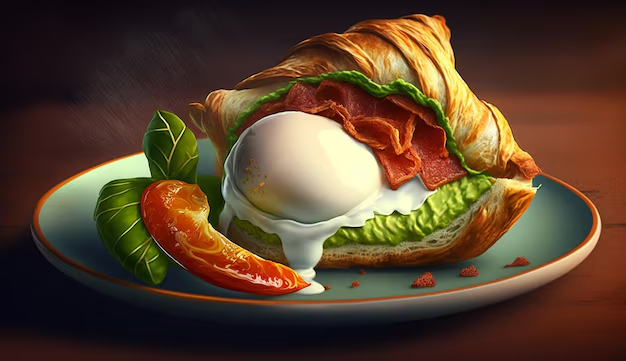Food isn’t just something we eat; it’s also a manner to express creativity. When chefs and home cooks treat food as art, they create dishes that not only taste great but also look gorgeous. This method, often called “food as art,” turns meals into creative experiences. Let’s explore how food becomes art, from the ingredients and presentation to the emotions it inspires.
The Basics of Food Art
Food as art means more than just making dishes look adorable. It involves using color, shape, and texture to make food visually pretty and meaningful. For example, vibrant vegetables, sauces, and garnishes can add a lot of color to a plate, while different textures like crispy, smooth, or creamy bring variety to the dish. It considers the whole experience, from how the dish looks to how it tastes and feels.
Artistic chefs usually think like painters, using the plate as their canvas and food as their medium. By combining colors, arranging food in unique ways, and even playing with the height of the dish, they create a masterpiece on a plate. Some even use edible flowers, gold leaf, or other unusual ingredients to make their creations stand out.
The Process of Making Food Art
Creating arts takes a lot of planning and skill. First, the chef thinks about the dish’s theme and message. If the dish is meant to celebrate a holiday, for example, the chef might use colors or ingredients that represent that holiday. Valentine’s Day dishes often include red and pink elements, while Thanksgiving meals might focus on warm, autumnal shades.
Next, chefs focus on plating, or how they arrange the food. Plating is a skill that can make a simple meal look elegant. Chefs carefully place each ingredient to create balance on the plate. Some might use lines of sauce, microgreens, or a sprinkle of spice to add extra visual elements. With this attention to detail, even a small plate of food can look magnificent.
Texture is another crucial part of food as art. Chefs might combine different textures—like pairing a soft puree with a crunchy topping—to make the dish more interesting. Mixing textures isn’t just about taste; it’s also about appearance. When a dish has a variety of textures, it keeps the diner engaged and excited about each bite.

Food Art Around the World
The concept of food as art exists in many cultures around the world. In Japan, for example, sushi chefs spend years mastering the art of making sushi. Each piece of sushi is crafted with accurateness, from the slicing of the fish to the shaping of the rice. Japanese bento boxes also showcase food as art, with ingredients arranged in colorful, artistic patterns that reflect the seasons or popular characters.
In France, the tradition of haute cuisine highlights detailed, elegant presentations. French chefs use complex techniques and high-quality ingredients to create dishes that look like they belong in a gallery. French pastries, like macarons and éclairs, are often carefully decorated, making them look as good as they taste.
In India, food presentation is often vibrant and colorful, with dishes that celebrate spices and flavors. Many Indian sweets, like jalebi or barfi, are shaped and decorated in unique ways. The vibrant colors and complex designs make each piece a visual treat and a sweet luxury.
Why People Love Food Art
It is popular because it combines the pleasures of eating with the joy of seeing something beautiful. When food looks as good as it tastes, it enhances the whole dining experience. Many people enjoy taking photos of food art to share online, spreading their appreciation for culinary creativity. it can be inspiring, reminding people that cooking is an art form anyone can enjoy and experiment with.
Food art also makes dining more enjoyable. When we eat something beautiful, it feels special, like a treat for both the eyes and the palate. This is why food art is often used for special occasions or fine dining restaurants. A well-plated dish can make a simple meal feel luxurious, adding a layer of excitement to the experience.
Food Art at Home
You don’t have to be a professional chef to create food art. Many people experiment with eating fruits, vegetables, or desserts in creative ways. Simple things like arranging a colorful salad or garnishing a soup can add a touch of art to everyday meals. Using cookie cutters, edible flowers, or even carefully drizzling sauces can turn home-cooked meals into artful creations.
Final Thoughts Food as art shows that meals can be more than just nourishment—they can be an expression of creativity and culture. From chefs in fine dining to home cooks experimenting with ingredients, the practice of making food beautiful adds a new dimension to our dining experiences. The next time you see a beautifully plated dish, remember that it’s not just food; it’s a form of art that’s meant to be savored visually and tasted with joy.







